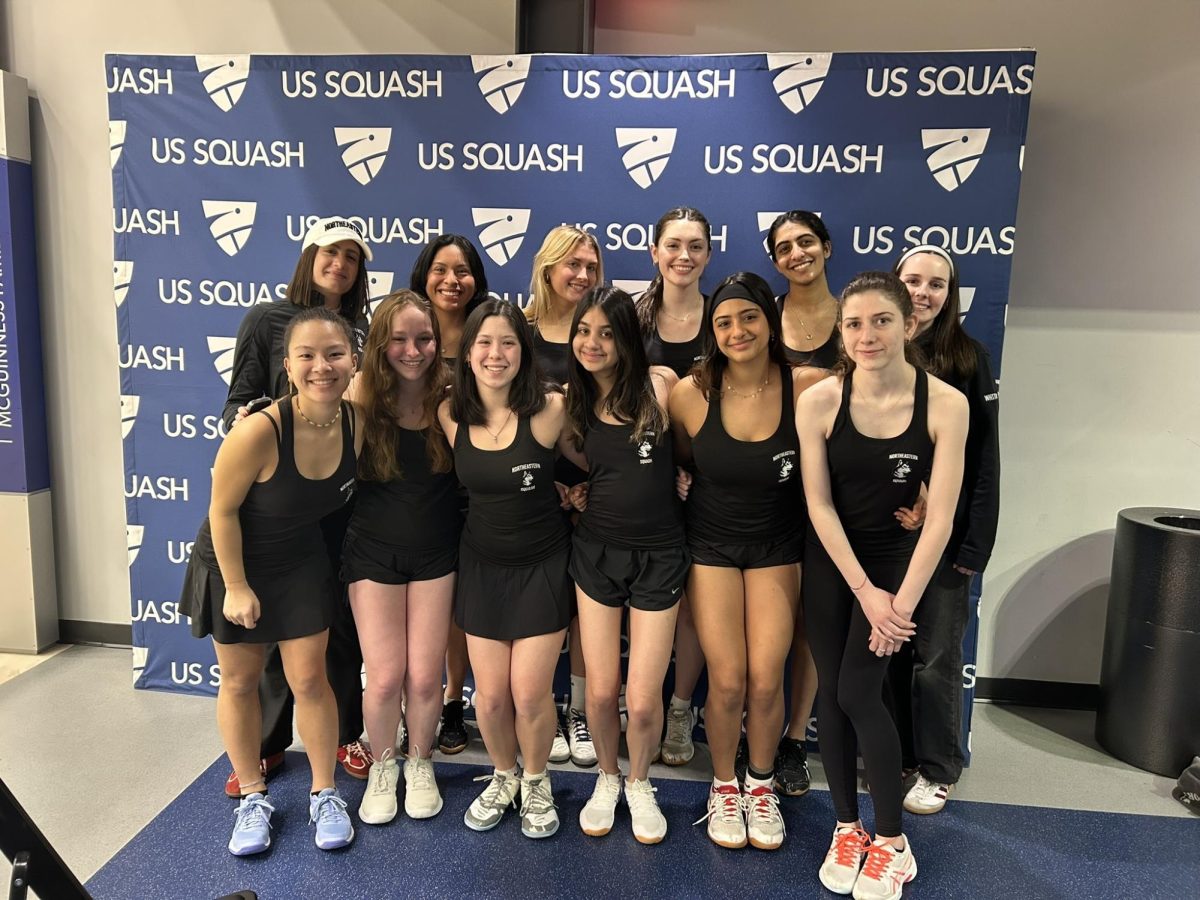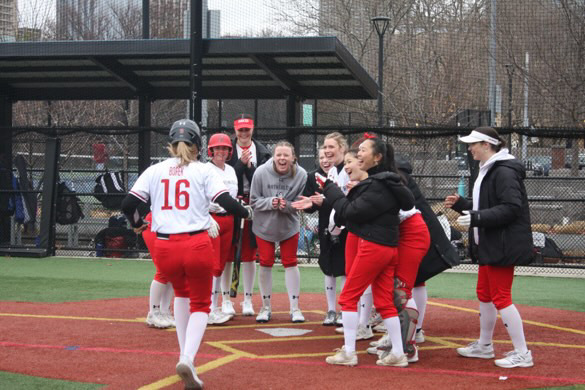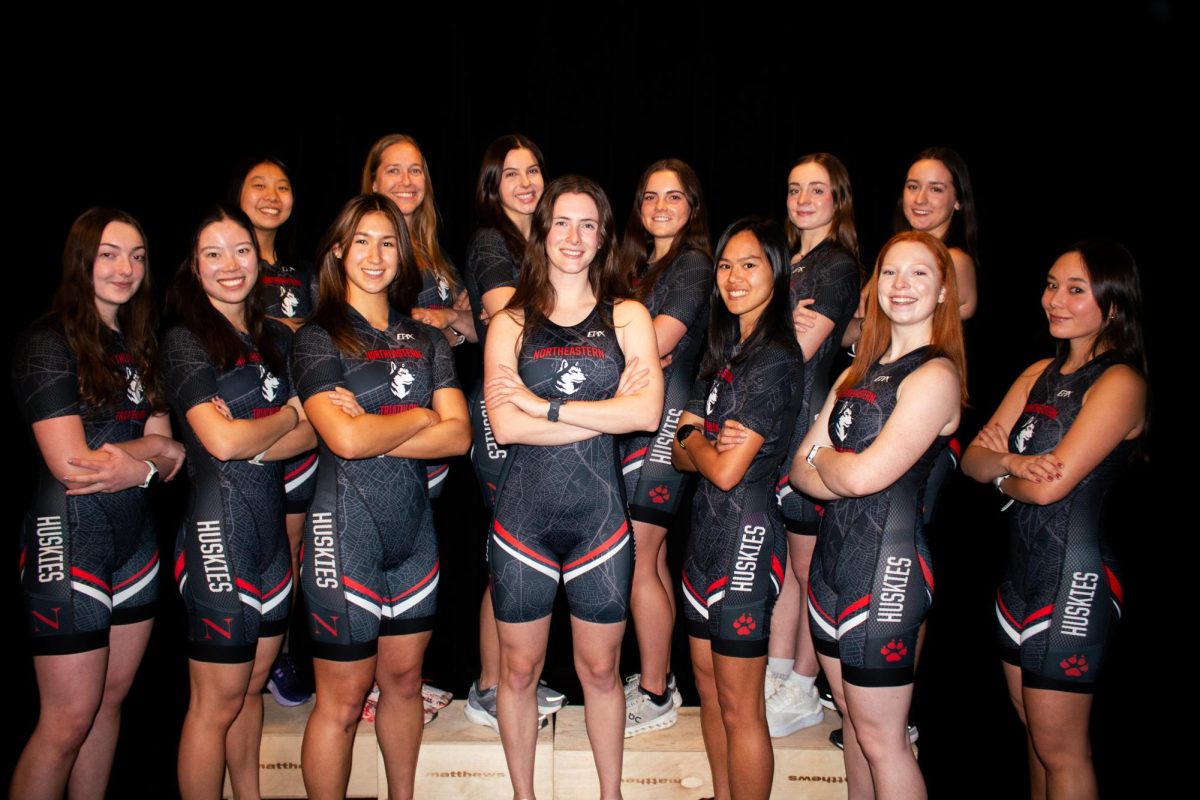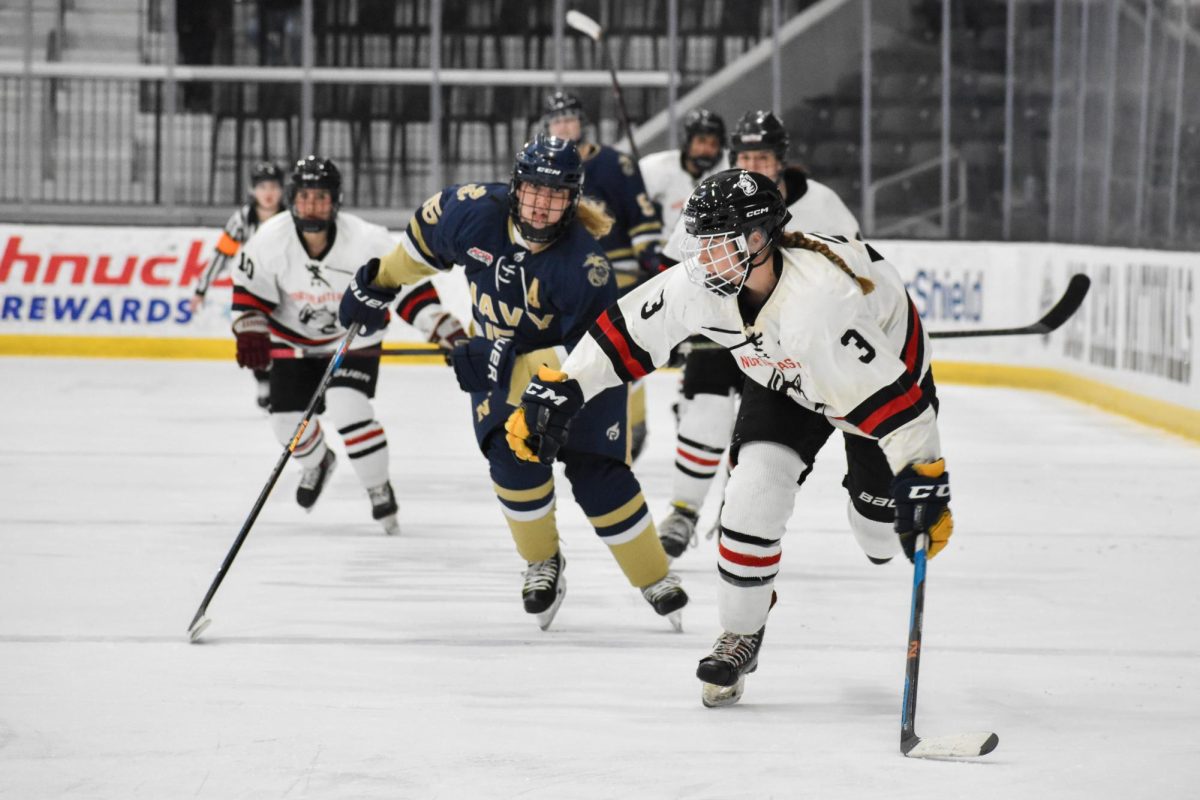From player one to nine, Northeastern women’s club squash team showcased its depth after securing fourth place at the College Squash Association, or CSA, Nationals tournament hosted in Philadelphia Feb. 13.
After entering the tournament ranked second with a balanced ladder of nine players, the Huskies were not able to secure wins against Washington University in Saint Louis and University of California Los Angeles, which would’ve brought the trophy back to Beantown.
The Huskies last won the tournament in 2020, a year before CSA divided the competition into club and varsity teams.
“All the success is a direct action of the players and e-boards,” Emily O’Brien, a fourth-year journalism major, said of the team’s dedication and hard work.
This year, the Northeastern women’s club squash team positioned itself as the fourth team in Division A in the CSA.
O’Brien joined the squash team in the fall of 2021 when several spots opened up. A flock of new talent joined the team at the same time and have competed together ever since. This year’s nationals was their last tournament together.
“It was very sentimental playing for the last time, but all the memories that we’ve experienced together have been amazing,” O’Brien said.
Squash rosters use a ladder system, meaning players from the same team compete in challenge matches to move up or down based on their performance.
On every team, those ladders are formed of nine players that then play in a best-of-five game format against the opposing team. The first player to reach 11 points wins the game. In team competitions, the team that wins the majority of individual matches defeats its opponent.
When they played against former varsity programs, the Huskies faced a disadvantage as the opponent’s top four seeded players in the ladder were typically recruited, whereas Northeastern’s top four weren’t.
According to O’Brien, the Northeastern squash team is the reason why club squash teams don’t play varsity teams anymore in CSA. After the Huskies beat Vassar College, a varsity program at the time, in 2020, Vassar filed for the change.
Cassidy King, a fourth-year combined chemical and environmental engineering major and captain of the team, only started playing squash when she joined the team in 2024. Just a year later, she made her national debut as the fifth-seed.
As the fifth player on the ladder, she became the deciding factor in the team’s victory, as the top four players suffered defeats while those ranked below her secured wins.
She lost two important games, but the experience helped her recognize her strengths and weaknesses in squash.
“I know where my learning points are from now on, so I can improve for future tournaments,” King said.
This season, her teammates selected her to be the team captain. In just her second year playing the sport, she began to grasp “the bare bones of being a good leader.”
Her challenge at first was her limited familiarity with the game.
“I definitely had to learn a lot more about squash in order to lead my peers,” King said.
As she took on more responsibilities as a team member, King found that leadership extended beyond just the sport.
“I’m honored to be in the position I am in. I think being someone who my friends can turn to for anything, whether it is a personal problem or something related to squash, is super gratifying,” King said.
This spring, the team welcomed Riya Ananthanpillai, a first-year international business major. Ananthanpillai was initially positioned fourth on the ladder, but her talent and easy adaptation to the team helped her ascend to nationals in first place.
“We all went home happy because we put in our best effort,” Ananthanpillai said.
As a small club sport, the team faces certain challenges around funding.
Although O’Brien is a member of the club sports council and meets with the athletics department once a year, she has no influence in determining the specific budget that meets each team’s needs.
“It is not a club sport issue, it is an athletics issue because they have not increased the funding of club sports as a department in that period of time,” O’Brien said.
In total, 54 sports club teams at Northeastern require university funding.
“There needs to be a bit more acknowledgment from the university for them to realize that club teams are important,” O’Brien said. “They prioritize what makes them money.”
Northeastern’s athletics department is in charge of crafting and allocating a budget for each club. There has not been an increase in funding for the club squash team since 2020, but inflation in the cost of necessary expenses like travel has only made the club increasingly more expensive to maintain, O’Brien said.
“We have to be cognizant of how much court time we’re actually able to get, because courts are expensive, and with more funding, we would be able to have more tournaments with other teams,” King said.
O’Brien also said she thinks Northeastern could do a better job of allowing club teams to practice more hours per week, since SquashBusters is a facility they have to share with varsity programs that have court time priority.
The club squash team is responsible for finding and paying its own coach, but it has encountered financial difficulties in hiring coaches at reasonable prices.
“More funding would be helpful in finding a coach that could spend more individualized time with us,” O’Brien said.
Compared to other Northeastern club sports clubs with larger rosters, the squash team has only 12 players, which increases the spending per person.
“Twelve people are pretty much responsible for that funding, as opposed to, like, the lacrosse team, where they can have 40 members,” King said. “We may not have all the resources, but we have the heart.”









